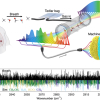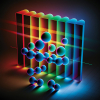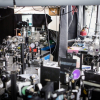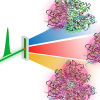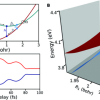
As part of the EU project CHEQUERS, the Fraunhofer Institute for Applied Solid State Physics IAF and its partners have jointly developed a hand-held scanner for the remote detection of explosives and hazardous substances. “Our hazardous substance scanner covers a large spectral range in no time, provides precise results and can even be used by untrained personnel. This is extremely useful at crime scenes, after terroristic attacks or after accidents in industrial plants in which chemicals spread in an uncontrolled way. Rescue forces can react immediately to the threat,” explained Dr Stefan Hugger, project manager and scientist at Fraunhofer IAF.
The CHEQUERS consortium faced the technical challenge to develop a hand-held system for remote detections of hazardous substances from a safe distance and with a fast reaction time. The result is a measuring device based on infrared backscattering spectroscopy. The research team combined very fast, widely tuneable quantum cascade lasers with adjusted transmission and receiver optics, fast IR detectors and a fitting control and detection software.
Portable sensors for remote spectroscopic detections require especially compact and fast tuneable laser sources. “Such devices need to compensate the inevitable movements of the hand and still be able to detect a conclusive spectrum within a short amount of time. Together with Fraunhofer IPMS, we have developed a miniaturised quantum cascade laser with an external resonator that is able to scan the whole spectral range of the QC laser chip within just a millisecond,” said Hugger, who represented Fraunhofer IAF at the final meeting. The measuring principle is based on selective spectral lighting of the target in the wavelength range of 1000–1300 cm–1. The chemical substance is identified based on the intensity of the backscattered light and the illumination wavelength. The spectral fingerprint is matched with an integrated database that contains a large amount of safety-relevant substances.
The hand-held demonstrator was successful in a series of test measurements conducted by the Federal Criminal Police Office in cooperation with Fraunhofer IAF in early 2019. “During the test measurements, the scanner for hazardous substances was able to detect many explosives and their precursor materials, and has thus proven that the technology works. The next step is to increase the robustness of the measuring system to make it ready for daily use”, commented Hugger.






